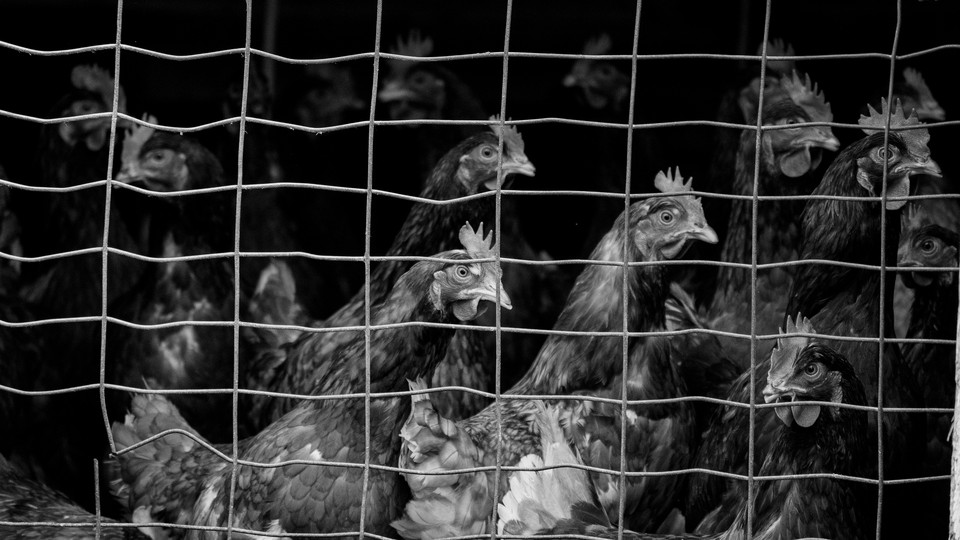Bird Flu Is Quietly Getting Scarier
4 min read
Up until last Friday afternoon, a total of 13 people in the United States had officially come down this year with avian influenza H5, also known as bird flu. A subtype of that virus, a potential pandemic pathogen called H5N1, has for months been circulating in our dairy herds, and has already killed tens of millions of birds here. The 13 human cases through last Friday were generally mild, and more important, they were all clearly linked to sickened cows or poultry. When I checked in with bird-flu experts in July, they told me that this fact was crucial. The red flag for a crisis would come only, they said, if and when the virus started showing signs of spreading from person to person.
Then came Case 14. According to the week’s-end update from the CDC, at least one more person has now been infected with an H5 virus, and this time, the patient, who is in Missouri, isn’t known to have been exposed to any ailing farm animal. In other words, the harbinger of a broader, deadly crisis may just have ratcheted a little further up the flagpole.
Whatever state of danger this implies, the CDC’s report didn’t get much play. Although the case was covered by major news outlets, it competed for attention through the weekend with stories on the war in Gaza, another ghastly high-school shooting, and tonight’s presidential debate, among many other pressing matters. When I told my husband, a historian, about the new infection, he was nonplussed. After I explained the implications—possible human-to-human transmission?!—he conceded that it “seemed bad,” then continued eating dinner. The next night, at a wedding party in a crowded bar in Brooklyn, I tried again: Was anybody else feeling spooked? No one was aware of any updates from Missouri, nor did they seem to care that much when I described the details. This is where we are with bird flu at the moment: The awkward space between watchful waiting and all-out panic mode. The risks may still be minimal, but the stakes are very high—and each new piece of information seems to make the situation only a bit less stable than it was before. Yet it’s hard to keep a solid grasp on what it means and whether it’s important.
For most people, ignoring bird flu altogether may be entirely appropriate, at least for now; also, bringing up a novel respiratory virus at someone’s wedding party is a great way to kill the vibe. (Sorry, Max and Daphne!) According to the CDC, the danger posed to the general public by bird flu “remains low.” The Missouri case, which was detected via seasonal-flu surveillance, remains puzzling. For now, there’s no affirmative evidence that the disease was caught from someone else; the person may instead have been infected by a contaminated bird feeder, an infected cat, or even just a glass of raw milk. Beyond the fact that the patient is an adult who had “underlying medical conditions,” and that they were hospitalized and treated with antiviral medications, little else is known about them, not even their specific age. In fact, it isn’t even clear whether bird flu was the primary reason the patient was hospitalized. The most comforting outcome so far is that the person doesn’t seem to have infected anyone else.
This leaves public-health researchers and science journalists in a tricky situation. Given all of these unknowns, it would be both premature and immoral to sound the alarm about the next pandemic. At the same time, bird flu is a real and growing concern, and the current state of play—specialists on heightened alert, set against a near-total state of ignorance among many members of the public—is disquieting. The mere fact that H5N1 is now spreading through the nation’s farms, exposing chickens, cows, and pigs alike, means that it will have many opportunities, in the months and years ahead, to recombine or mutate in dangerous ways. “It’s like playing the lottery,” one flu expert told me this summer. “We’re giving this virus a lot of tickets.”
The public ought to understand this risk and take it seriously—but how does one communicate an awkward state of in-between? COVID fatigue still lingers, and few people will want to think about another virus, let alone the possibility of further masks and isolation, until it’s truly necessary. “I only want to know when I need to tell my aging parents how to stay safe,” a friend told me. By that criterion, bird flu can safely be ignored. Even taking the Missouri case into account, all of the available information indicates that a pandemic is not imminent. Still, the facts may change at any time, and experts are awaiting further data. Once the CDC has identified the exact subtype of virus involved in the Missouri case, we’ll know whether the person really was infected with the same H5N1 bird-flu virus that is circulating on farms.
Even if this case proves to be a false alarm, people tracking bird flu seem more on edge than ever. The fact that more than a dozen people have already been infected this year is alarming in itself. At any given moment, we may be just a few mutations away from another global outbreak of a new disease. The public needn’t worry for the moment, but the gap between what’s happening with bird flu and how that news gets received seems a little stranger every day.



